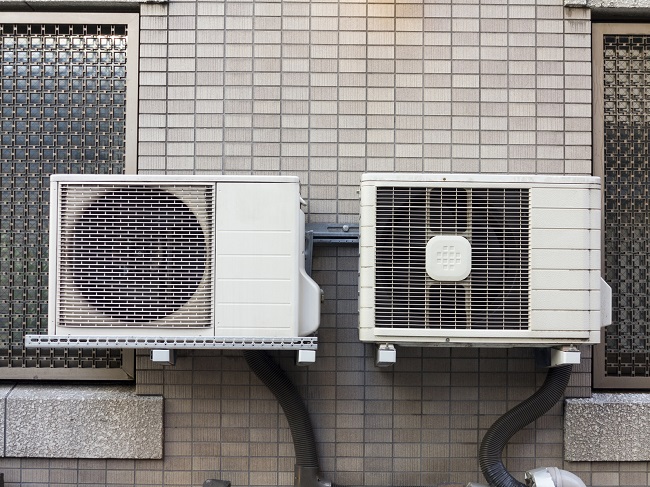Reverse Cycle Air Conditioning: A Comprehensive Guide to the Ultimate Home Comfort System
Are you tired of having multiple appliances for heating and cooling your home? Have you ever wished for a single system that could keep you comfortable all year round while also being energy efficient? Look no further, the solution is right at your doorstep - reverse cycle air conditioning. This comprehensive guide will help you understand how this incredible technology works, its benefits, and why it could be the perfect addition to your home.
What is Reverse Cycle Air Conditioning?
Reverse cycle air conditioning, also known as a heat pump, is an innovative HVAC (Heating, Ventilation, and Air Conditioning) system that provides both heating and cooling for your home. Unlike traditional air conditioners that only cool the air, a reverse cycle air conditioner can keep you comfortable during both hot summer days and cold winter nights. This versatile system offers a range of benefits, including energy efficiency, cost savings, and improved indoor air quality.
How Does Reverse Cycle Air Conditioning Work?
To understand how reverse cycle air conditioning works, let's first look at the basic principle of any air conditioner. An air conditioner works by transferring heat from one area to another, using a refrigeration cycle. In cooling mode, it absorbs heat from the indoor air and expels it outdoors, thus cooling the room.
The magic of the reverse cycle air conditioner lies in its ability to reverse this process. In heating mode, it extracts heat from the outdoor air (even in cold temperatures) and transfers it indoors, effectively warming your home. This is possible due to a component called the reversing valve, which changes the direction of the refrigerant flow, allowing the system to switch between heating and cooling modes.
Modern reverse cycle air conditioners are also equipped with inverter technology, which allows them to adjust their output to match the required temperature, resulting in more consistent comfort and improved energy efficiency.
Advantages of Reverse Cycle Air Conditioning
There are several reasons why reverse cycle air conditioning is a popular choice for homeowners:
- Year-round comfort: As mentioned earlier, a reverse cycle air conditioner can provide both heating and cooling, making it the perfect solution for maintaining a comfortable temperature in your home throughout the year.
- Energy efficiency: Heat pumps are known for their exceptional energy efficiency, as they can produce up to three times more heat energy than the electricity they consume. This not only helps you save on energy bills but also reduces your carbon footprint.
- Cost savings: By replacing separate heating and cooling appliances with a single reverse cycle air conditioner, you can save on initial equipment costs and ongoing maintenance expenses.
- Improved indoor air quality: Most reverse cycle air conditioners are equipped with advanced filtration systems that help remove dust, allergens, and other pollutants from the air, creating a healthier indoor environment.
- Quiet operation: Inverter technology allows reverse cycle air conditioners to operate at lower noise levels, ensuring a more peaceful and comfortable living space.
Choosing the Right Reverse Cycle Air Conditioner
When selecting a reverse cycle air conditioner, consider the following factors:
- Size: The capacity of the air conditioner should be appropriate for the size of the room or area you wish to cool or heat. Consult a professional HVAC technician to determine the right size for your needs.
- Efficiency: Look for a system with a high energy efficiency rating, indicated by the number of stars on the label. The more stars, the more energy-efficient the air conditioner.
- Features: Consider additional features such as programmable thermostats, smart controls, or air purification systems that can enhance your comfort and convenience.
- Brand reputation: Choose a reliable brand with a good track record of quality, performance, and customer service.
Installation and Maintenance Tips
Proper installation and maintenance are crucial for the optimal performance and longevity of your reverse cycle air conditioner. Here are some tips to ensure your system functions at its best:
- Hire a professional: Engage a licensed HVAC technician to install and maintain your reverse cycle air conditioner. They will ensure that the system is installed correctly, safely, and in compliance with local regulations.
- Regular maintenance: Follow the manufacturer's recommendations for routine maintenance, including cleaning or replacing filters, inspecting refrigerant levels, and checking for any potential issues.
- Keep outdoor unit clear: Ensure the outdoor unit is free from debris, plants, or other obstructions that could hinder airflow and affect the efficiency of the system.
The Cost of Reverse Cycle Air Conditioning
The cost of a reverse cycle air conditioner can vary depending on factors such as the system's size, brand, and additional features. However, it is important to remember that while the initial investment may be higher than that of a traditional air conditioner, the long-term savings derived from improved energy efficiency and lower maintenance costs can offset this expense.
Additionally, many countries offer incentives or rebates for energy-efficient appliances, which can further reduce the cost of purchasing a reverse cycle air conditioner.
Conclusion:
In conclusion, reverse cycle air conditioning is an excellent choice for homeowners looking for an efficient, versatile, and cost-effective solution for both heating and cooling their homes. By understanding how this innovative technology works and considering the factors discussed in this guide, you can make an informed decision and enjoy the unparalleled comfort and convenience that only a reverse cycle air conditioner can provide.








0 comments